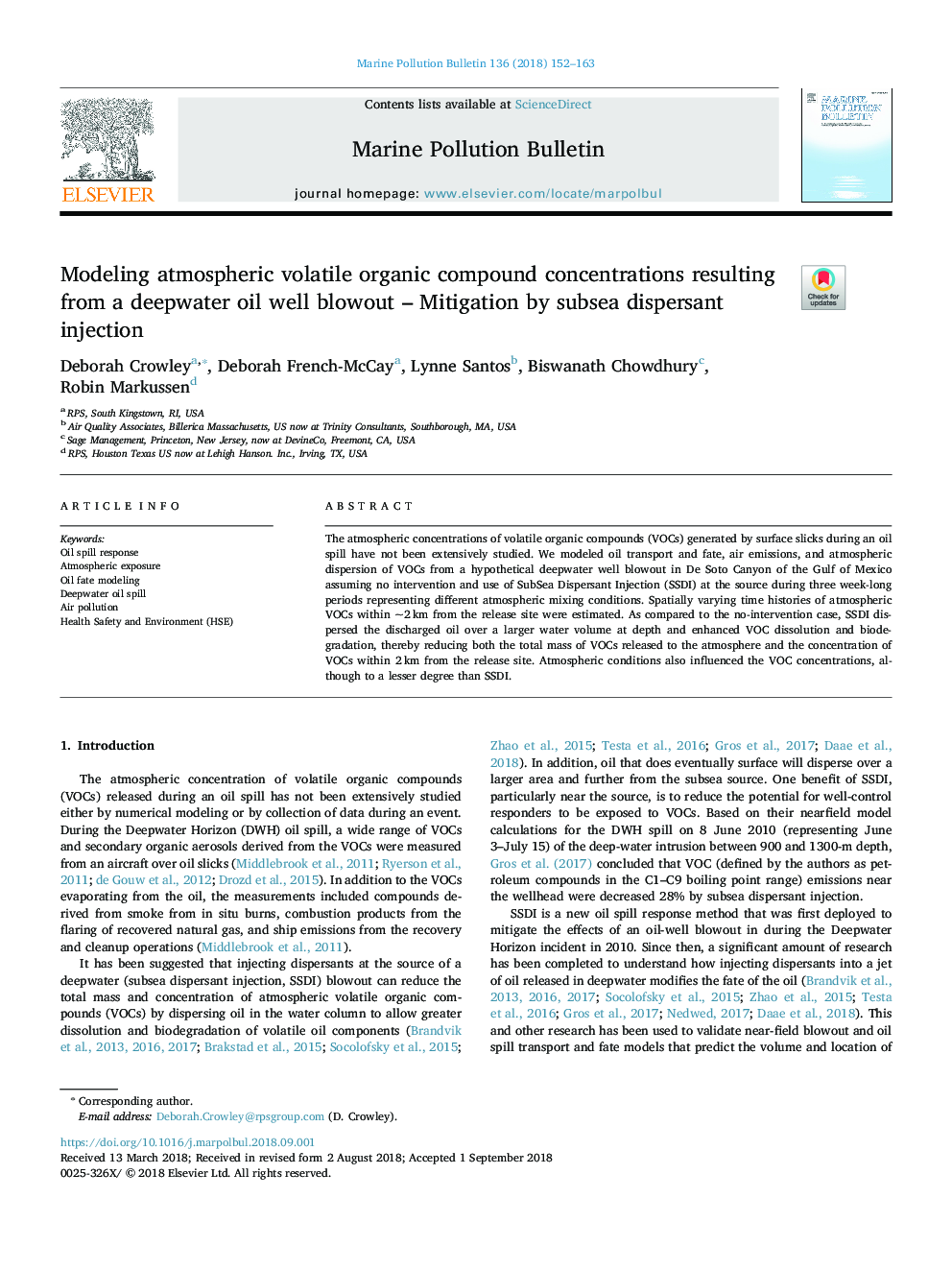| کد مقاله | کد نشریه | سال انتشار | مقاله انگلیسی | نسخه تمام متن |
|---|---|---|---|---|
| 10149697 | 1646760 | 2018 | 12 صفحه PDF | دانلود رایگان |
عنوان انگلیسی مقاله ISI
Modeling atmospheric volatile organic compound concentrations resulting from a deepwater oil well blowout - Mitigation by subsea dispersant injection
ترجمه فارسی عنوان
مدل سازی ترکیبات آلی ترکیبات فرار از اتمسفر از طریق یک چاه نفتی عمیق آب - کاهش اثر تزریق آب زیرزمینی
دانلود مقاله + سفارش ترجمه
دانلود مقاله ISI انگلیسی
رایگان برای ایرانیان
کلمات کلیدی
موضوعات مرتبط
مهندسی و علوم پایه
علوم زمین و سیارات
اقیانوس شناسی
چکیده انگلیسی
The atmospheric concentrations of volatile organic compounds (VOCs) generated by surface slicks during an oil spill have not been extensively studied. We modeled oil transport and fate, air emissions, and atmospheric dispersion of VOCs from a hypothetical deepwater well blowout in De Soto Canyon of the Gulf of Mexico assuming no intervention and use of SubSea Dispersant Injection (SSDI) at the source during three week-long periods representing different atmospheric mixing conditions. Spatially varying time histories of atmospheric VOCs within ~2â¯km from the release site were estimated. As compared to the no-intervention case, SSDI dispersed the discharged oil over a larger water volume at depth and enhanced VOC dissolution and biodegradation, thereby reducing both the total mass of VOCs released to the atmosphere and the concentration of VOCs within 2â¯km from the release site. Atmospheric conditions also influenced the VOC concentrations, although to a lesser degree than SSDI.
ناشر
Database: Elsevier - ScienceDirect (ساینس دایرکت)
Journal: Marine Pollution Bulletin - Volume 136, November 2018, Pages 152-163
Journal: Marine Pollution Bulletin - Volume 136, November 2018, Pages 152-163
نویسندگان
Deborah Crowley, Deborah French-McCay, Lynne Santos, Biswanath Chowdhury, Robin Markussen,
